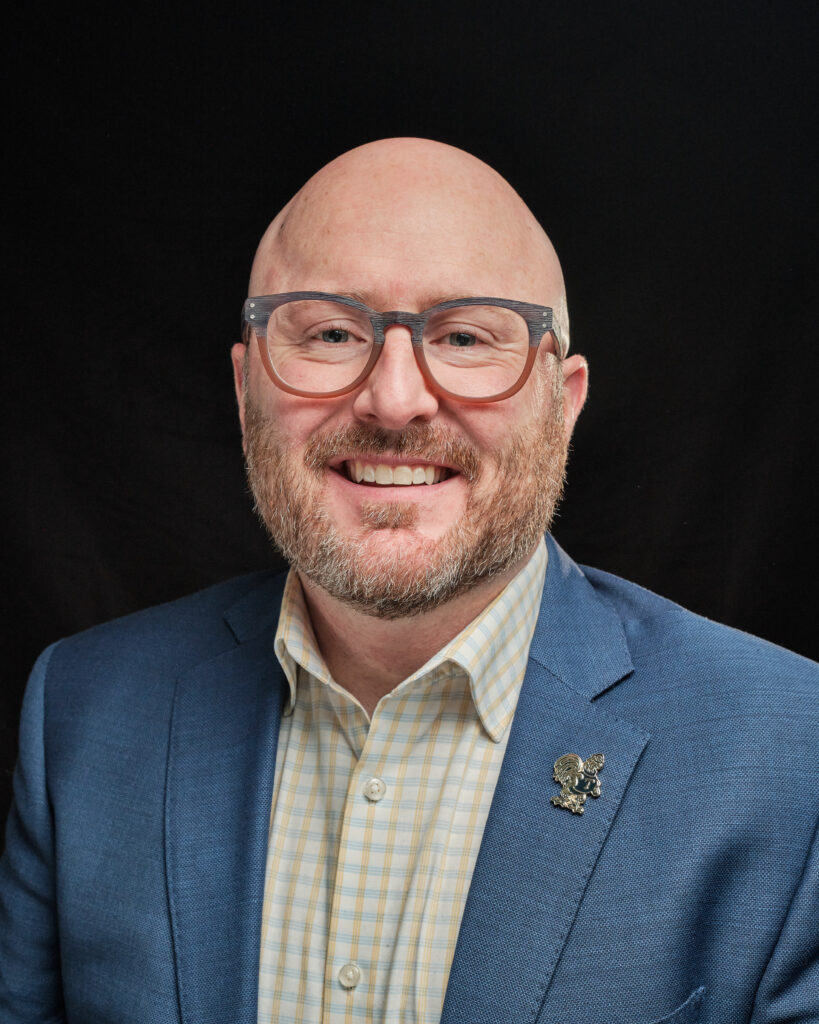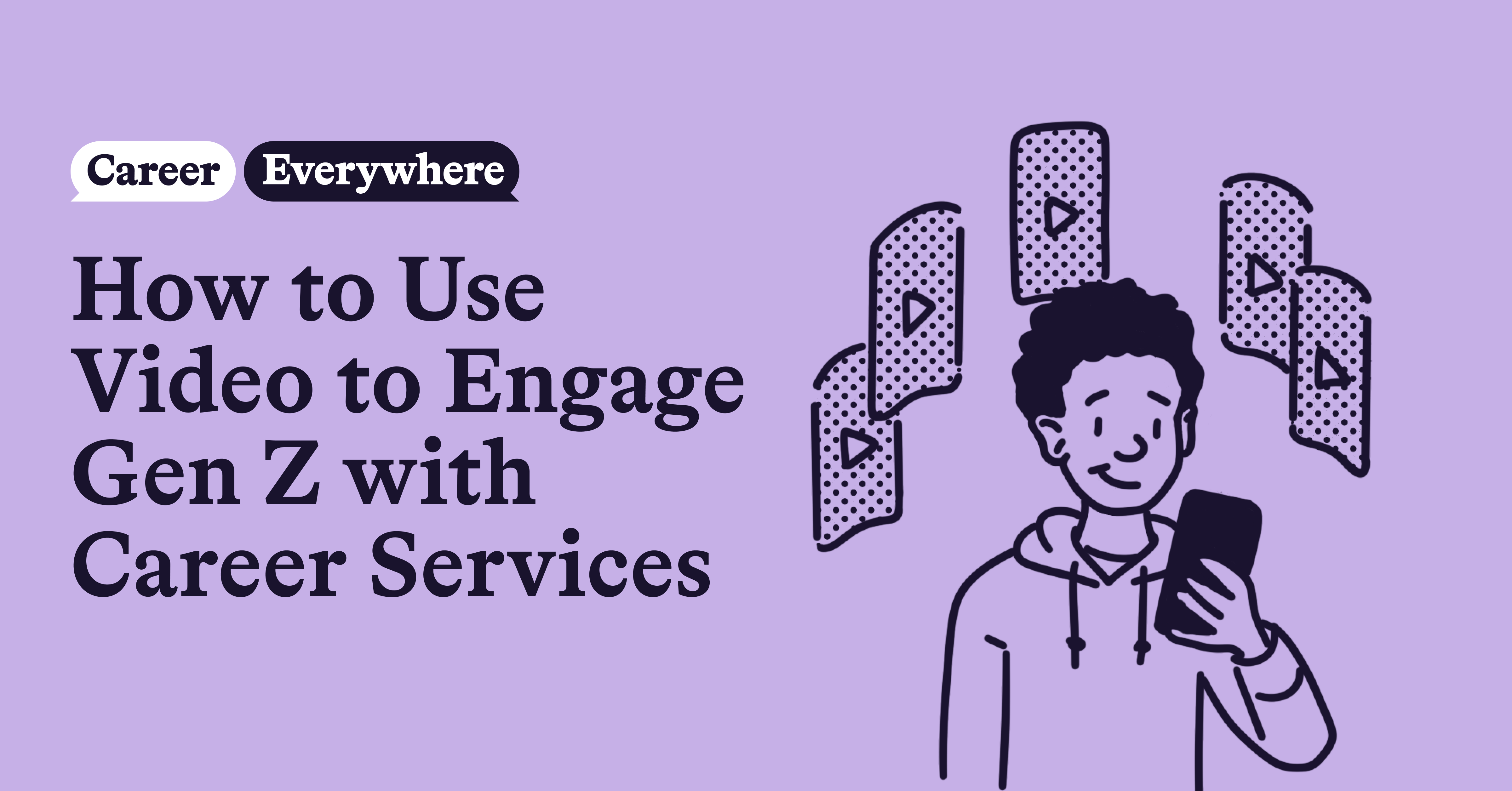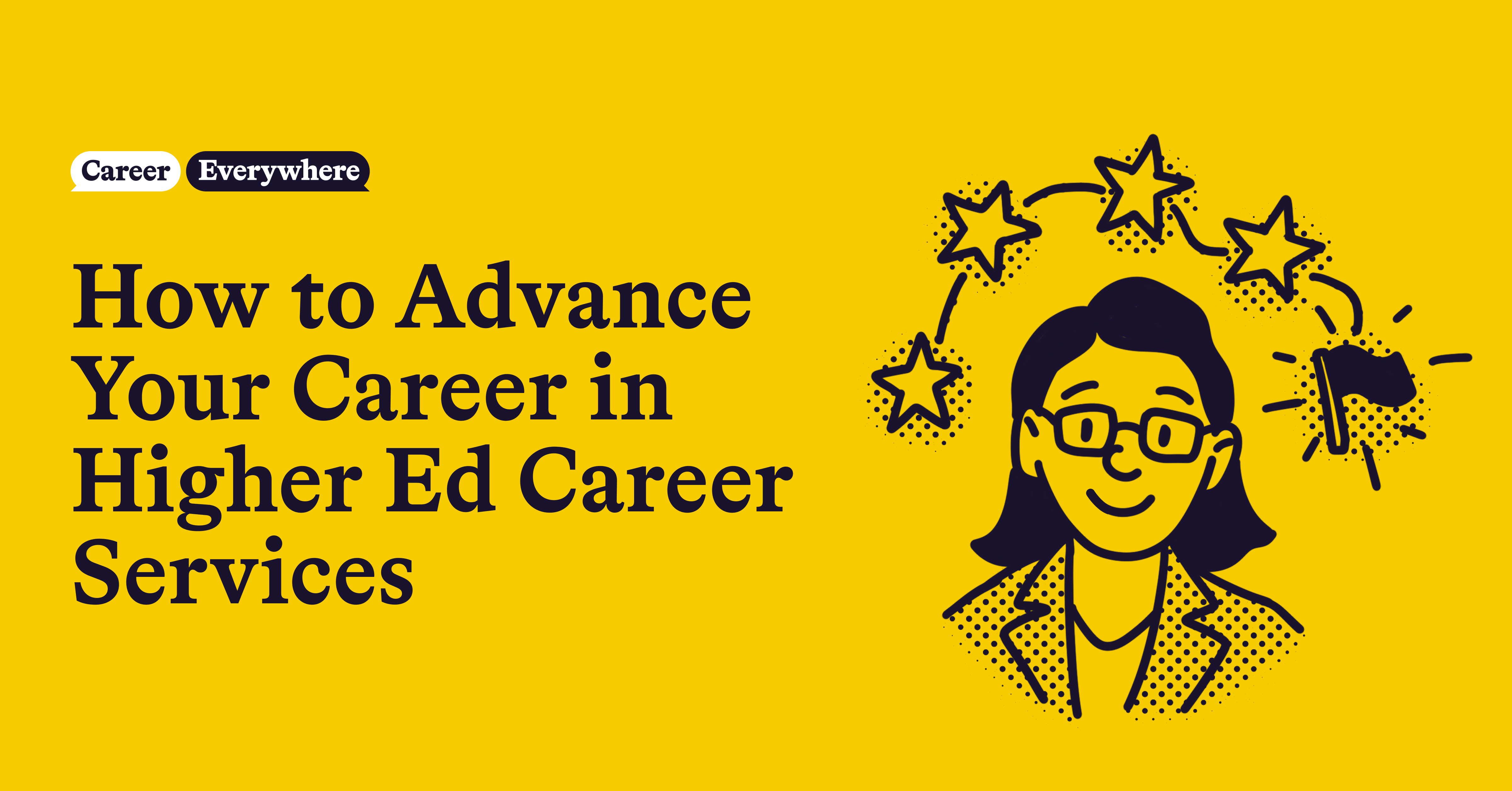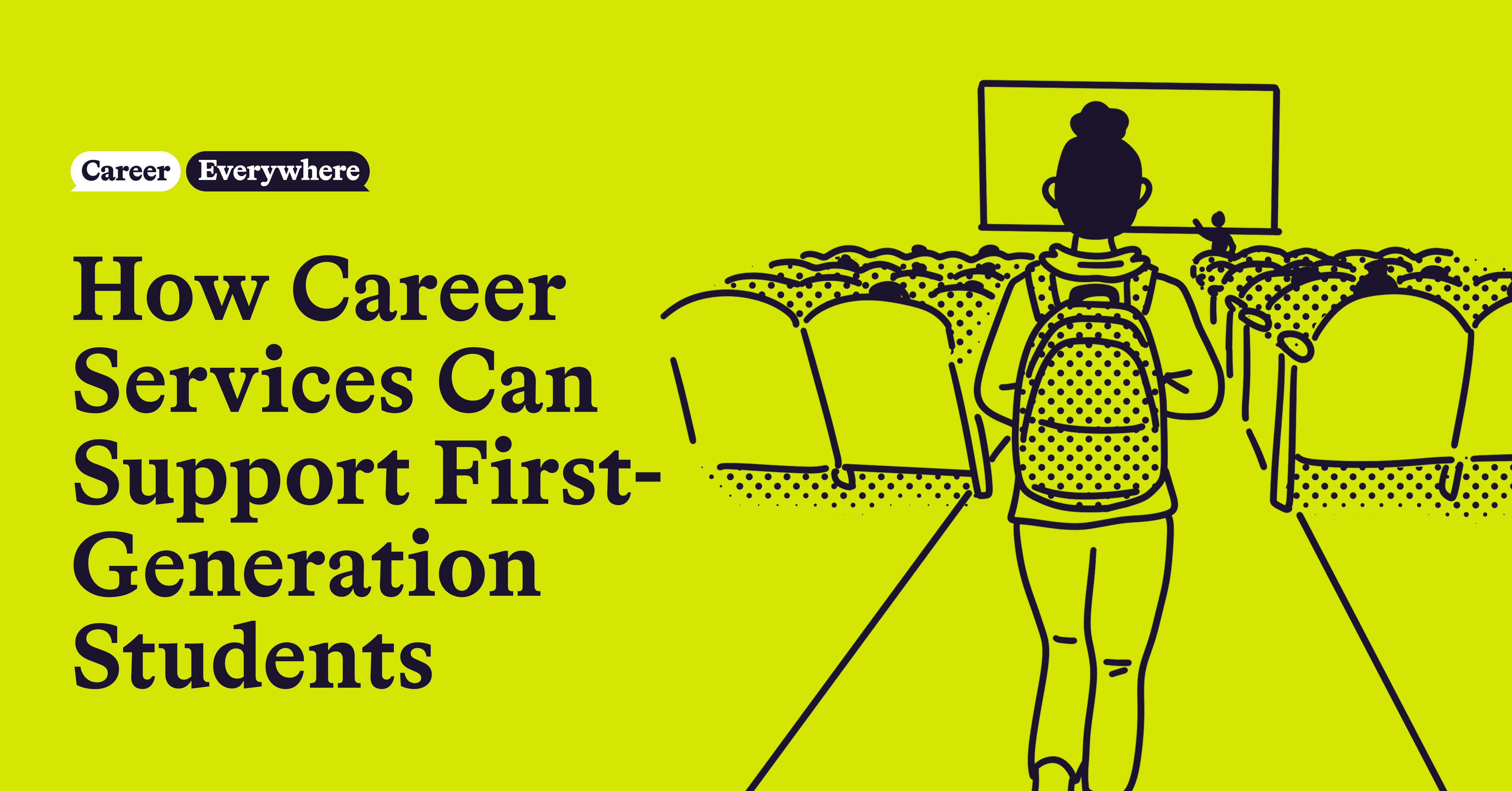
With students preparing for the rapidly-shifting world of work, more and more career centers are using the concepts of life design and design thinking to take a more holistic approach to career advising.
Why?

Because the future of work is already here. And career services teams must be ready to help students prepare for not only the jobs of today, but also the ones of tomorrow. In fact, some of the jobs current students will eventually get don’t even exist yet. How can career services prepare students for that unknown?
Joe Catrino, the Executive Director of Career and Life Design at Trinity College, talked with us recently on the Career Everywhere podcast about how career services and higher education can innovate and prepare students for the future of work.
Catrino focuses heavily on design thinking to innovate career services at Trinity. In fact, he even wrote a chapter about design thinking in the 2022 textbook, Mapping the Future of Undergraduate Career Education.
Watch, read, or listen to Catrino’s episode on the Career Everywhere podcast here.
What does the “future of work” mean?
“The future of work is here,” Catrino said. “It’s all stemming from disruption. There’s disruption everywhere. Think about artificial intelligence, machine learning, automation. Technology is disrupting how we work.”
From Catrino’s point of view, the world of work faces a “litany of disruption.” This disruption spans from technological to economical, from ecological to the pandemic. Students can no longer expect a stable work or career path after graduation. With so much change happening so quickly, the future of work demands creativity (no matter what the field), flexibility, and the willingness to upskill or reskill for workers (aka, today’s students) to surf the waves of change.
“What it comes down to is jobs are shifting and changing. How we work is shifting and changing. How we live and how we make decisions is changing,” Catrino said. “So as we think about helping students across the globe think about the future of work, it’s important because jobs that our students are going to have, they don’t even exist yet. How do you prepare students for that? How do you prepare for this future of work? Well, you focus on skills.”
Skills, which are more granular and transferable than any specific job or experience, can include helping students:
- Gain technical skills (finance, nursing, SQL programming, etc.) in their major
- Develop human skills (critical thinking, empathy, leadership, etc.) through a holistic, liberal arts education
- Learn life design skills from the career center to plan (or pivot) their next steps
Additionally, Catrino recommends teaching students how to articulate, define, and share the skills that they have by digging into their experiences, such as internships.
How can career services use life design and design thinking to help students prepare for the future of work?
“It all started for me when my former boss came to me and said, ‘Joe, I want you to read this book.’ And it was Designing Your Life by Bill Burnett and Dave Evans. If your boss were to hand you a book like that, you start to wonder what the message is they are trying to send you. Should I be looking for a new job once I read this book? What’s the deal?” Catrino said, chuckling.
All jokes aside, Catrino found the book life-changing. And Trinity College ended up being one of the first dozen schools to participate in Life Design Studio for Higher Education Professionals, run by Burnett and Evans out of the Stanford d.school. There, Catrino was trained in design thinking and started thinking of how to embed its principles back at Trinity.
“Design thinking came from engineers and designers. They were speaking a different language and they had to collaborate. So they came up with this design science, this human-centered approach, which is ultimately what design thinking is. It’s a five-step process. It starts with empathy [for the audience], defining [the problem], ideation [of solutions], prototyping, and testing. We want to dig in and really understand what the problems are,” Catrino said.
With Catrino’s new skills in design thinking, that one book recommendation turned into a multitude of quick prototypes of career services programs at Trinity, focused on preparing students for the future of work. Successful, continuing programs include:
- Bringing career services to pre-orientation for first-generation students
- Flipping an advising model into a coaching model to help students become the designers of their education and career plans
- Investing in a virtual career center (powered by uConnect) to make career resources accessible to students 24/7
- Integration with retention and transition programs to onboard returning students
- Partnering with the Office of International Studies to help international students build the experience they desire from their time in the US
Catrino applied design thinking principles to career services offerings, but also made sure to teach them to students as a lifelong skill.
“You may get to a certain point in your degree or in your life where you’re like, ‘I’ve been successful, but I’m not really in love with what I’m doing. There’s no meaning.’ And that’s what Burnett and Evans talk about in the book: designing a life of meaning and purpose,” Catrino said. “You have to think like a designer and be able to reframe and pivot.”
Why is it so important for career services to prepare students for the future of work?
The entire system of higher education is under intense scrutiny, in part because of concerns with return-on-investment for students’ future careers amid the increasing cost of attendance and rising student loan debt. If students aren’t prepared for the future of work, higher education as we know it won’t survive.
“We’ve got to make a move. We’ve got to save higher ed because higher ed is under attack,” Catrino said. “I’m not trying to be dramatic, but it’s happening. From a career perspective, it’s important that we up our game and we start to innovate and try things. I think for us, we’ve landed in design thinking and life design, and that’s been really good for us in the community here at Trinity.”
Like Trinity, all career services offices must innovate, as they provide a vital link between academics and the world of work, between students and employers. Design thinking is a key part of that innovation.
“We have to be ready to be versatile, be nimble, and not be afraid to try things,” Catrino said.
While some of his prototype programs flopped, others succeeded and continued through the design thinking process. These programs now benefit Trinity’s student retention and student/parent engagement. And the ideas don’t stop. Catrino is now applying design thinking principles to students on leave, pre-college and bridge programs, and more.
Innovating for the future of work elevates career services teams as critical thought leaders at this pivotal moment for higher education. If the ROI on post-secondary education is being questioned, there’s no office better positioned to provide the answer than career services.
Conclusion
The future of work is upon us, and now is the time for career services teams to innovate to prepare themselves and their students for what’s ahead. Life design and design thinking are two tools that can help students and career services teams alike to reflect on what makes a meaningful life and career—and what steps and skills are required to get there.
“We have an alumna from the class of 2020,” Catrino said. “She was an intern here in the office. She was a religious studies major, and now she’s absolutely killing it in tech sales.”
Catrino uses this anecdote to highlight the complexity of the future that students—and higher education—face.
“There is no linear path. That’s the beauty of this,” he said.
For more details on how career services teams can innovate for the future of work, check out Catrino’s episode on the Career Everywhere podcast.
To learn how uConnect can help you implement life design in your career center, fill out the form below to schedule a demo.


